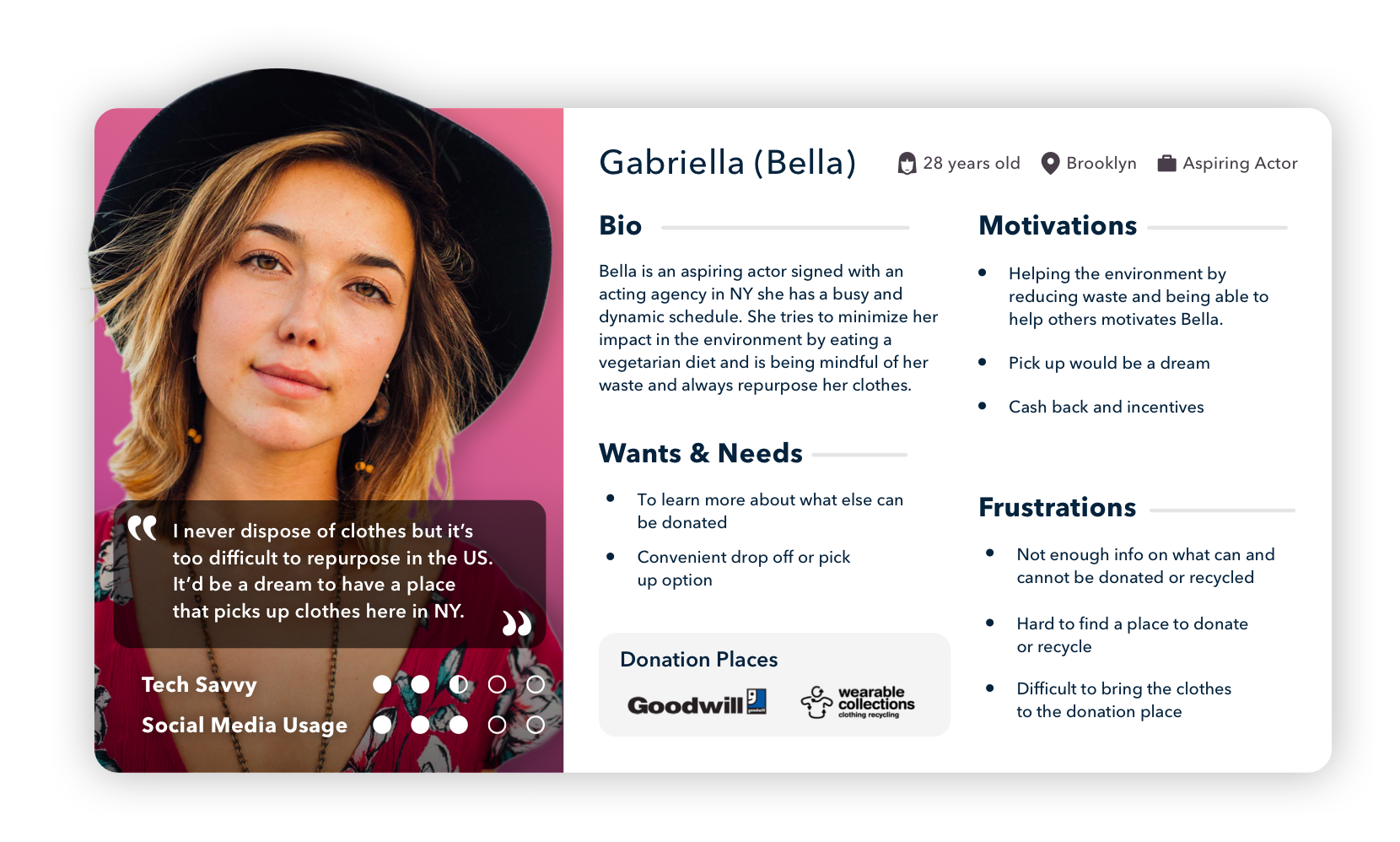Persona
A persona in UX (User Experience) is a fictional representation of a target user group based on research and data, used as a tool to understand and empathize with users’ needs, goals, behaviors, and preferences in order to inform design decisions.

What is a persona?
In UX design, a persona is a fictional representation of the ideal user of a product or service. Personas are created based on research and data collected from actual users or potential users of the product or service.
Personas are typically described in detail, including demographic information, personal characteristics, goals, motivations, and pain points. They are often given names and may include photos or other visual elements to help designers and stakeholders visualize and empathize with the user.
The purpose of creating personas is to provide a shared understanding of the user base and their needs, which can guide the design process and ensure that the product or service meets the needs of its target audience. By creating personas, designers can better understand the user’s goals, behaviors, and attitudes, which can inform design decisions and help to create a more user-centered experience.
Why are personas important?
Personas are important in UX design for several reasons:
- Understanding the user: Personas help designers to understand the user’s goals, motivations, and pain points. This understanding can help guide design decisions and ensure that the product or service meets the needs of its target audience.
- Communication: Personas provide a shared understanding of the user base that can be communicated to stakeholders and team members. This can help ensure that everyone is on the same page and working towards the same goals.
- Empathy: Personas help designers to empathize with the user and to design for their needs and preferences. This can lead to more user-centered design decisions and a better overall user experience.
- Testing and validation: Personas can be used to test and validate design decisions, as designers can ask themselves how a particular feature or design choice aligns with the needs and goals of the persona.
Personas are a valuable tool in UX design as they help to ensure that the product or service is designed for its intended audience, leading to a better user experience and increased user satisfaction.
Why are personas helpful in corporate environments?
Personas can be particularly helpful in a corporate environment for several reasons:
- Aligning stakeholders: In a corporate environment, there may be multiple stakeholders involved in the design process, including executives, marketing teams, and product managers. Personas can help align these stakeholders by providing a shared understanding of the user base and their needs, which can guide design decisions and ensure that the product or service meets the needs of its target audience.
- Prioritizing features: Personas can help prioritize features and design decisions based on the needs and goals of the user. This can help ensure that resources are allocated to features that will be most valuable to the user, leading to a better overall user experience.
- Communicating with development teams: Personas can help bridge the gap between the design team and the development team by providing a shared understanding of the user and their needs. This can help ensure that the development team is building the product or service with the user in mind.
- Testing and validation: Personas can be used to test and validate design decisions, as designers can ask themselves how a particular feature or design choice aligns with the needs and goals of the persona. This can help ensure that the product or service is meeting the needs of its target audience.
Personas can be a valuable tool in a corporate environment as they can help align stakeholders, prioritize features, communicate with development teams, and ensure that the product or service is designed with the user in mind.
How to create a persona?
Creating a persona involves several steps:
- Conduct research: Start by conducting research on your target audience. This can include surveys, interviews, and analytics data to gather information on their demographics, behaviors, needs, and pain points.
- Identify patterns: Look for patterns in the data you’ve collected to identify common characteristics, behaviors, and goals among your target audience.
- Create profiles: Based on the patterns you’ve identified, create profiles of your target audience. Give each profile a name, photo, and description that reflects their demographics, behaviors, goals, and pain points.
- Define their journey: Map out the user journey for each persona, outlining their motivations, goals, and pain points at each stage of the journey.
- Use the persona: Once you’ve created a persona, use it to guide design decisions and ensure that the product or service is meeting the needs of its target audience. You can also use the persona to test and validate design decisions, as well as to communicate with stakeholders and team members.
Overall, creating a persona involves conducting research, identifying patterns, creating profiles, defining their journey, and using the persona to guide design decisions.



